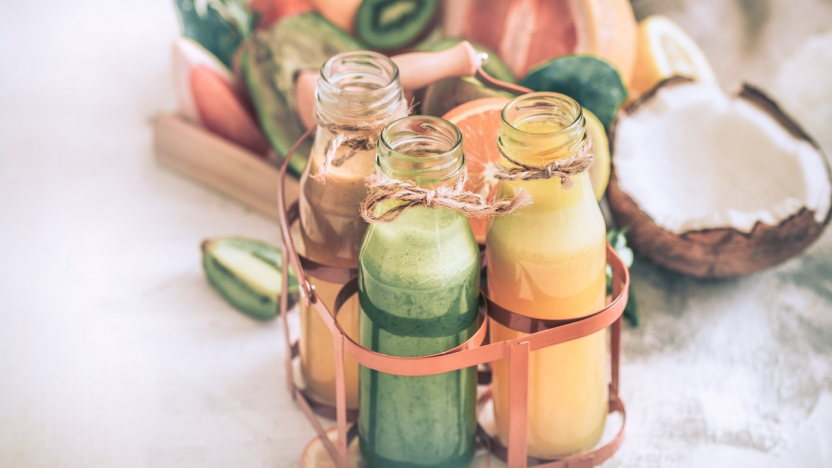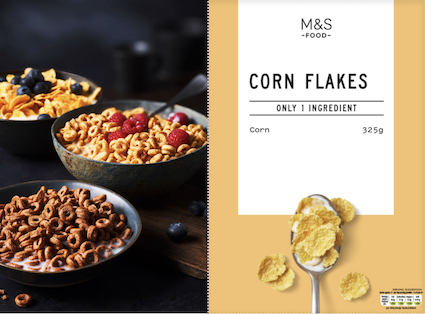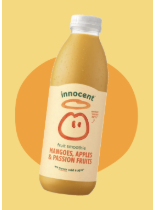Food for thought: The link between healthy eating and IP in the food industry

As consumer appetite for healthy and functional alternatives grows, trademark applications for healthy food branding have spiked. However, there is a limit to the health and nutrition benefits you can claim in a food or drink trademark, says Vanessa Harrow. She serves up recent market launches, rebrands, and trademark rulings that offer a taste of the possibilities and limitations for IP in the food industry.
From spiralised courgettes to the current Dubai chocolate phenomenon, food fads sweep the food and drinks sector all the time. However, one trend that seems to gain traction every year is the growing market for health-conscious and functional foods.
With more and more consumers educating themselves about the benefits of clean eating and paying greater attention to ingredient lists, the market for products that promote well-being is not only well established but also continues to grip food and drinks manufacturers, resulting in more innovation in the sector year on year. From functional drinks to health-boosting foods, brands are constantly innovating and adapting their offering to keep up with evolving health trends and build and maintain consumer loyalty – and that impacts their branding and trademark strategies, too.
What's fuelling the drive for healthy options?
- While the desire for healthy food and drink options has existed for a long time, research suggests the global COVID-19 pandemic accelerated the desire for health-conscious options.
- According to a 2023 article by food machinery company Volpak, one in three consumers is willing to spend more on foods with healthy and nutritional properties.
- Many governments are also implementing regulations in favour of healthy foods, further boosting growth in health-conscious and functional foods and drinks.
What are “health-conscious” and “functional” foods?
Health-conscious foods are foods aimed at consumers with a wellness- orientated lifestyle who are concerned with nutrition, fitness, stress management and their environment.
Functional foods go one step further and include foods that claim to have benefits beyond their standard nutritional properties. The concept originated in the 1980s when Japanese government agencies started approving foods with proven benefits “aimed at improving the health of the general population”.
From fortified cereals and probiotic yoghurts to packaging suggesting the fruits and vegetables they contain are “superfoods” (a term which has come under much criticism in recent years for its lack of scientific support), you will see many items claiming additional nutritional benefits in supermarket food and drinks aisles – at least in the UK.
What does this mean for IP in the food industry?
Food and drinks is a competitive sector for brand owners, and the market for health-conscious and functional products is no different. IP provides a way for brand owners in the food industry to separate their health-conscious and functional products by protecting healthy food branding (such as unique product names and packaging), proprietary blends and even health-related terms.
Ever since functional foods started to gain traction in the food and drinks sector, we have seen trademark applications that include or allude to scientific or wellness-related terminology, such as:
- Activita: Protected by Danone for probiotic yoghurt, reinforcing the product’s association with gut health. The element “Activ-” suggests the concepts of movement and stimulation, both of which are aligned well with the idea of promoting active digestion and healthy gut function. Similarly, the word “via” suggests a journey or pathway, alluding to the smooth movement of food through the digestive system. Beyond that, the word sounds both scientific and natural – striking the special balance between clinical credibility and natural wellness seekers.
- Flora Pro Activ: An established name, which was protected as early as 2001 when the original manufacturer Unilever was asked to develop a healthier alternative to traditional butters and margarines. The result was a spread with plant sterols clinically proven to lower cholesterol.
- Vita Coco: The well-known natural coconut water drink first sought protection in the UK in 2009. The product is an example of a naturally occurring functional product with coconut water being associated with hydration and natural electrolytes. The chosen name combines the word “Vita”, meaning life and commonly used in the medical and health sector, with the word “Coco” as a shorthand for coconut.
As these examples show, health-conscious branding often involves nutrition and wellness claims, alongside claims regarding functional benefits. While tempting to include these as part of the brand identity, brand owners must also comply with strict regulations around such claims, however. For instance, a food trademark for ‘Immunity Boost’, as well as being considered descriptive, would face scrutiny if the product cannot substantiate the health claim.
For this reason, many brands are moving towards more subtle wellness branding by using names and brand livery which evoke or suggest a particular health benefit, rather than making a direct claim; for example:

- KIND – the name and package allude to the fact that by eating the product you are being kind to your body.
- NāKD – the name and packaging allude to the clean nature of the product.
- Nature Valley – the name and packaging allude to the concept of natural health.
Other notable examples include Fuel10k, a brand that started as a meal replacement powder and has now expanded to include cereals, granola, on-the-go cookies, breakfast drinks and the like. The brand makes no or very few regulated health claims, but the name and livery allude to energy, strength, endurance and athleticism, and the mentions of high fibre and high protein reinforce the message that this is a health-focused brand.
Similarly, Alpro markets its plant-based milk alternatives with a focus on natural ingredients and sustainability but avoids making any unsubstantiated health claims. To reinforce its messages of nature and sustainability, Alpro goes one step further with its healthy food branding by not just looking at what is in its products but also what is in the packaging.
The rise of “clean label” brand liveries
Looking more generally at brand livery strategies, there has been a recent increase in so-called “clean label” branding in the food and drinks sector. This branding style appeals to consumers who prioritise natural ingredients and health-conscious choices. With a focus on minimal ingredients, an absence of artificial additives, minimal processing and natural and clean brand livery, it is easy to see why this trend is gaining more and more traction.
 The most recent and high-profile version of this trend in the UK is the new Marks and Spencer “Only… Ingredients” product range (see left), which features a range of goods with a very short ingredient list and simple branding to support this message. While products with minimal ingredients are not a new concept (see also Innocent Drinks, Rude Health, and so on), the PR surrounding this launch has got a lot of people talking, with some industry insiders predicting that other brands (and supermarket chains) will soon follow suit.
The most recent and high-profile version of this trend in the UK is the new Marks and Spencer “Only… Ingredients” product range (see left), which features a range of goods with a very short ingredient list and simple branding to support this message. While products with minimal ingredients are not a new concept (see also Innocent Drinks, Rude Health, and so on), the PR surrounding this launch has got a lot of people talking, with some industry insiders predicting that other brands (and supermarket chains) will soon follow suit.
Marks & Spencer is something of a trailblazer for healthy food branding in the UK, having previously launched the Made Without (for example, Made Without Wheat) and Balanced for You ranges. More recently, the chain also released a range promoted as “Brain Food”, which it describes as:
“Created with nutrition criteria developed in consultation with the British Nutrition Foundation, our new Brain Food range champions six brain health-supporting nutrients that many of us lack in our diets: omega-3 (DHA), iron, zinc, iodine, folate, zinc and vitamin B12. All our Brain Food products contain at least two of these nutrients, carry our Eat Well flower health seal of approval, and taste amazing. Enjoy them as part of a healthy balanced diet.”
How to protect a healthier option as a food trademark
With increasing demand from consumers and growing innovation across the food and drink sector, it’s clear from these examples that health-conscious and functional foods are here to stay. If they are to compete in this dynamic market, brand owners need to consider how they can use trademarks and related IP to help differentiate their products, so where should they start?
Whether they use clean-label branding or not, health-conscious and functional foods often involve generic elements that are not eligible for trademark protection – or involve wording which can trigger additional regulations regarding misleading claims.
Creating a catchy food trademark or a meaningful message on a drink bottle presents some unique challenges for brand owners, therefore. As they try to navigate this area, the following should be kept in mind:
- Avoid generic terms (such as “natural granola” and “healthy oats”) as part of the brand identity and be clear that – although they could potentially influence consumer purchasing decisions – such terms cannot and should not be monopolised by a single entity. In other words, they can be used to appeal to consumers, but they cannot act as an indication of brand origin.
- Adding generic words, such as “pure” or “natural”, does not make a name unique, and generally less emphasis will be placed on these elements within the mark. These can be added to other more distinctive elements, but the level of protection associated with these generic words will be limited, if any.
- Consider making subtle associations for health claims by using evocative wording and visuals, but be careful to avoid any misleading claims which cannot be substantiated:
—Potentially problematic term: Cure/Prevent – suggests medical benefits and is not allowed without scientific proof
—Safer phrasing: Supports gut health – still needs to be backed by evidence but a lesser claim than cure/prevent
—Potentially problematic term: Superfood – often challenged due to lack of official regulation
—Safer phrasing: Made with 100% natural ingredients – verifiable
 Clean-label branding doesn’t mean you won’t have protectable IP rights, as the M&S Only… Ingredients range illustrates. Although it is very simple and “clean” in design, it uses the M&S name, and its branding can still be protected by registered and unregistered IP rights. Another example here is Innocent (see right), which has simple and clean labelling (see below) showcasing the fruit/vegetable quantities in its products and the absence of additives. Despite this “clean-label branding”, the drinks company has an extensive IP portfolio – and was involved in a high-profile copyright dispute regarding the dude logo.
Clean-label branding doesn’t mean you won’t have protectable IP rights, as the M&S Only… Ingredients range illustrates. Although it is very simple and “clean” in design, it uses the M&S name, and its branding can still be protected by registered and unregistered IP rights. Another example here is Innocent (see right), which has simple and clean labelling (see below) showcasing the fruit/vegetable quantities in its products and the absence of additives. Despite this “clean-label branding”, the drinks company has an extensive IP portfolio – and was involved in a high-profile copyright dispute regarding the dude logo.
- Remember that your brand identity is much more than your brand name. As well as considering trademark and design protection for your name, logo and packaging, think about protecting the ingredients in your product, or potentially even the manufacturing technique/process. Whether it is using trade secrets, copyright, patent protection or the concept of proprietary ingredients, there is a plethora of IP protection which can be utilised by food and drinks brands to gain and protect a competitive advantage in their industry.
Health crazed? The big picture for IP in the food industry
As is the case with any branding or new product development, involving your legal advisers early on is very important. From identifying the potential IP to setting a strategy for clearance searching, protecting and enforcing your IP, your legal advisers can help you navigate and balance the commercial and legal considerations at play. As the health-conscious and functional food trend continues to grow, innovation and the resulting IP will continue to play a critical part in success.
As stated by Rene Florix, chief innovation officer at the food research company NIZO: “Developing innovative new food and beverage products with functional benefits can be a high-stakes game but get it right and the rewards are even higher”. IP provides a channel through which to protect the investment made in such innovation and can play a key role in ensuring long-term success for healthy food brands in a highly saturated and competitive market.
To find out more about trending IP topics in the food industry or for support protecting healthy food and drink branding and innovations, speak to your Novagraaf attorney or contact us below.
Vanessa Harrow is a Managing Director of Trademarks at Novagraaf UK and a UK Chartered Trademark Attorney.